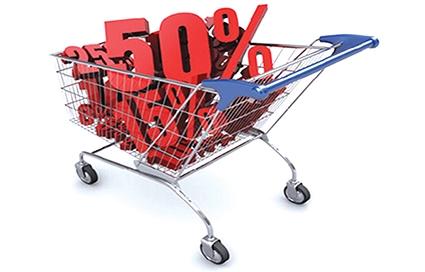RETAIL FPI| Food Prices Keep Going South
By the end of September, ISET’s Retail Food Price Index decreased by 0.6% m/m and 2% y/y. In the second half of September, we recorded very large (seasonal) increases in the prices of plums (24.4%), peaches (20.2%), and eggplants (14.3%). Prices declined the most for grapes (-21.7%), beef (-8.5%), and milk (-7.9%).
Leaving seasonal price fluctuations aside, one should note that traditional Georgian products, such as grapes and plums, are significantly more expensive compared to the same period in 2015. This may be a result of greater domestic demand, or weather conditions that adversely affected harvest quality. Grapes and plums are up 21.3% and 19.1% y/y, respectively. If the former, this is definitely great news for Georgian farmers.
MORE ABOUT GRAPES
The significant drop (-21.7%) in the price of grapes during the last two weeks of September signals the beginning of the harvest season (Rtveli). Despite that, table grape prices remain 21.3% higher compared to September 2015. One possible explanation for this is the so-called “base-year effect”: an exceptionally bad harvest in one year can make the following year look good, even if only mediocre (and vice versa).
Indeed, last year was not a very good year for Georgian grape producers and winemakers. Georgia’s wine exports in 2015 dropped by almost 50% due to major currency crises and recessions in Russia and other major export destination countries. This directly affected grape prices, bringing them well below the record levels achieved in 2013 and 2014 (thanks to the re-opening of the Russian market). Of course, table grape prices are not exactly representative of the situation in the wine grape market. Still, it is highly likely that when wine grape prices go up, so do prices for the table grape varieties.
AND GREAT BARGAINS!
Competition among Georgian retailers is getting quite fierce. Vying for market share, retail networks continue to offer steep discounts on popular items in the hope of using them as “loss leaders”. For example, the entire 8.5% biweekly decrease in the price of beef is the result of one supermarket chain cutting their prices by 28.6%, from an average of 14 to 10 GEL.
The prevalence of such bargains, as well as the general downward trend in food prices, suggests that the Georgian retail market is quickly maturing, straining less efficient operators, creating the environment for mergers and acquisitions in the sector, and providing an impetus for the strongest actors to expand beyond Tbilisi.











